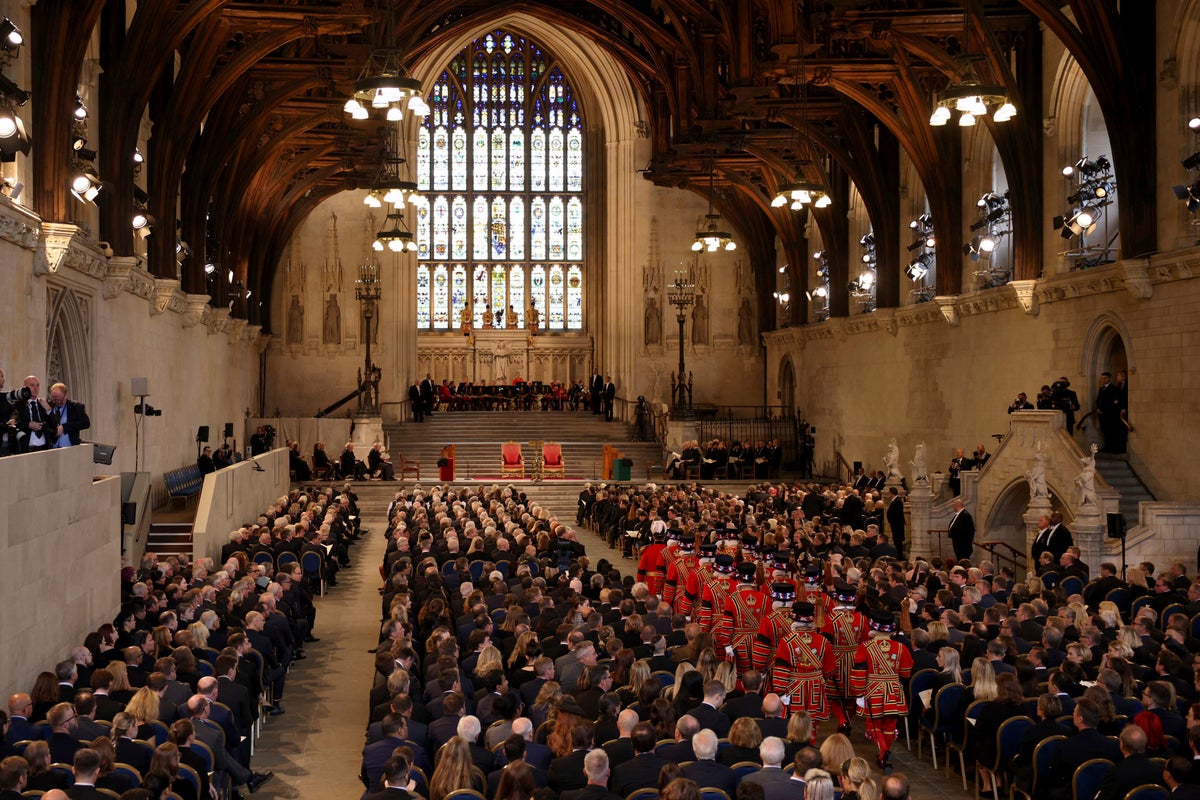
In his first visit to Britain’s Parliament as monarch, King Charles III spoke of feeling the “weight of history which surrounds us” and referenced his “medieval predecessors” as he pledged to follow in his late mother Queen Elizabeth II’s footsteps and uphold the principles of constitutional monarchy.
Charles’s speech to legislators on Monday is the latest historic event to take place in Westminster Hall, a vast 900-year-old building that’s been at the heart of Britain’s history for a millennium.
The oldest building in Parliament, it was where Guy Fawkes and Charles I were tried, where kings and queens hosted magnificent medieval banquets, and where ceremonial addresses were presented to Queen Elizabeth II during her silver, golden and diamond jubilees. It is also where Elizabeth’s coffin will lie in state for public viewing from Wednesday.
A look at Westminster Hall’s centuries of history, and the rituals dictating the relationship between Britain’s monarchy and government:
WESTMINSTER HALL
First built in 1097, Westminster Hall is the oldest existing part of the medieval Palace of Westminster still surviving in its original form. Most of the present Houses of Parliament was built after a fire in 1834.
The hall, believed to be the largest in Europe in medieval times, was the site of lavish coronation feasts celebrating kings and queens from Richard I in the 12th century to Anne Boleyn in the 1500s.
Later the hall was used as law courts for numerous famous trials — including that of Charles I, who was tried there and convicted of high treason before he was beheaded in 1649.
In a bid to quell a growing power struggle between the crown and Parliament, Charles I attempted to arrest lawmakers in the House of Commons in 1642. That triggered the English Civil War, which ended with a temporary abolition of the monarchy and a decade of rule under Oliver Cromwell.
CROWN VS PARLIAMENT
The deposing and execution of Charles I spelt the beginnings of modern Britain’s system of constitutional monarchy. In the decades that followed, rules were laid down to ensure that the monarch serves as a nonpartisan head of state and he or she cannot make laws without the consent of a democratically elected Parliament.
British monarchs are still barred from entering the House of Commons to this day because of the actions of Charles I.
Every year, the monarch presides over the ceremonial state openings of Parliament in the unelected upper chamber, the House of Lords. During these annual events, an official known as Black Rod summons elected lawmakers from the House of Commons to the House of Lords to hear the monarch’s speech, and traditionally the door of the Commons is slammed in Black Rod’s face — a symbol of the independence of the House of Commons.
As head of state, Charles III, like his predecessors, reigns but does not rule. Apart from appointing new prime ministers and the annual task of opening new sessions of Parliament, monarchs stay out of the political limelight and are constitutionally obliged to follow the government’s advice.
Charles will, however, hold weekly audiences with Prime Minister Liz Truss, though what is discussed during such meetings is never made public.







